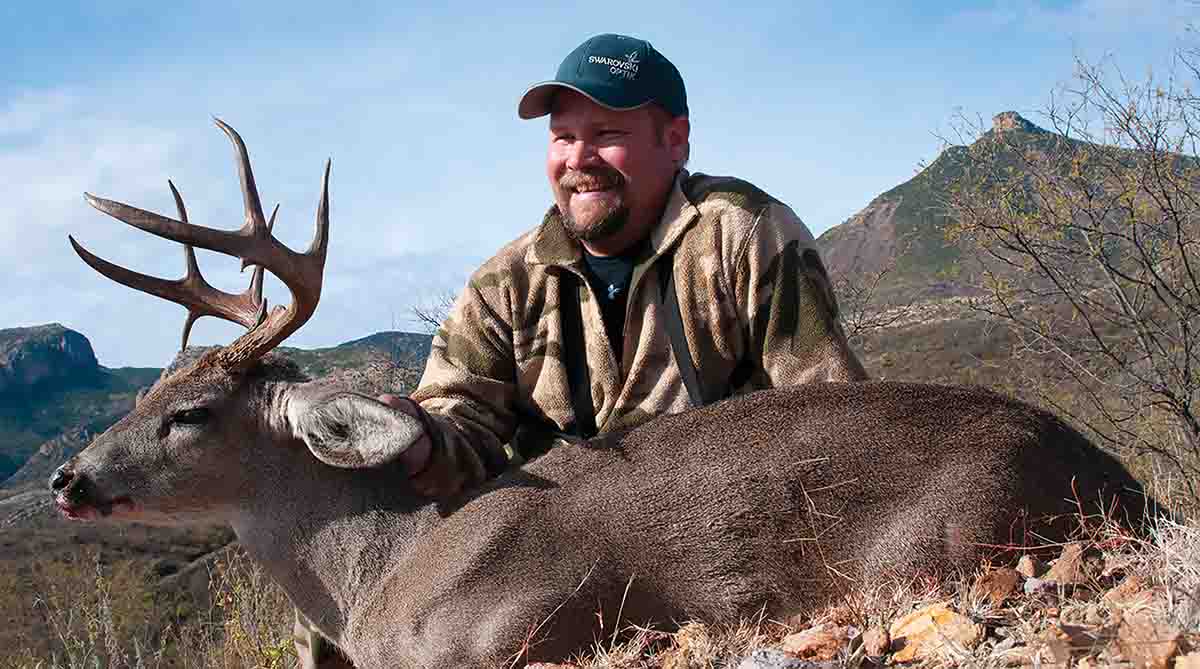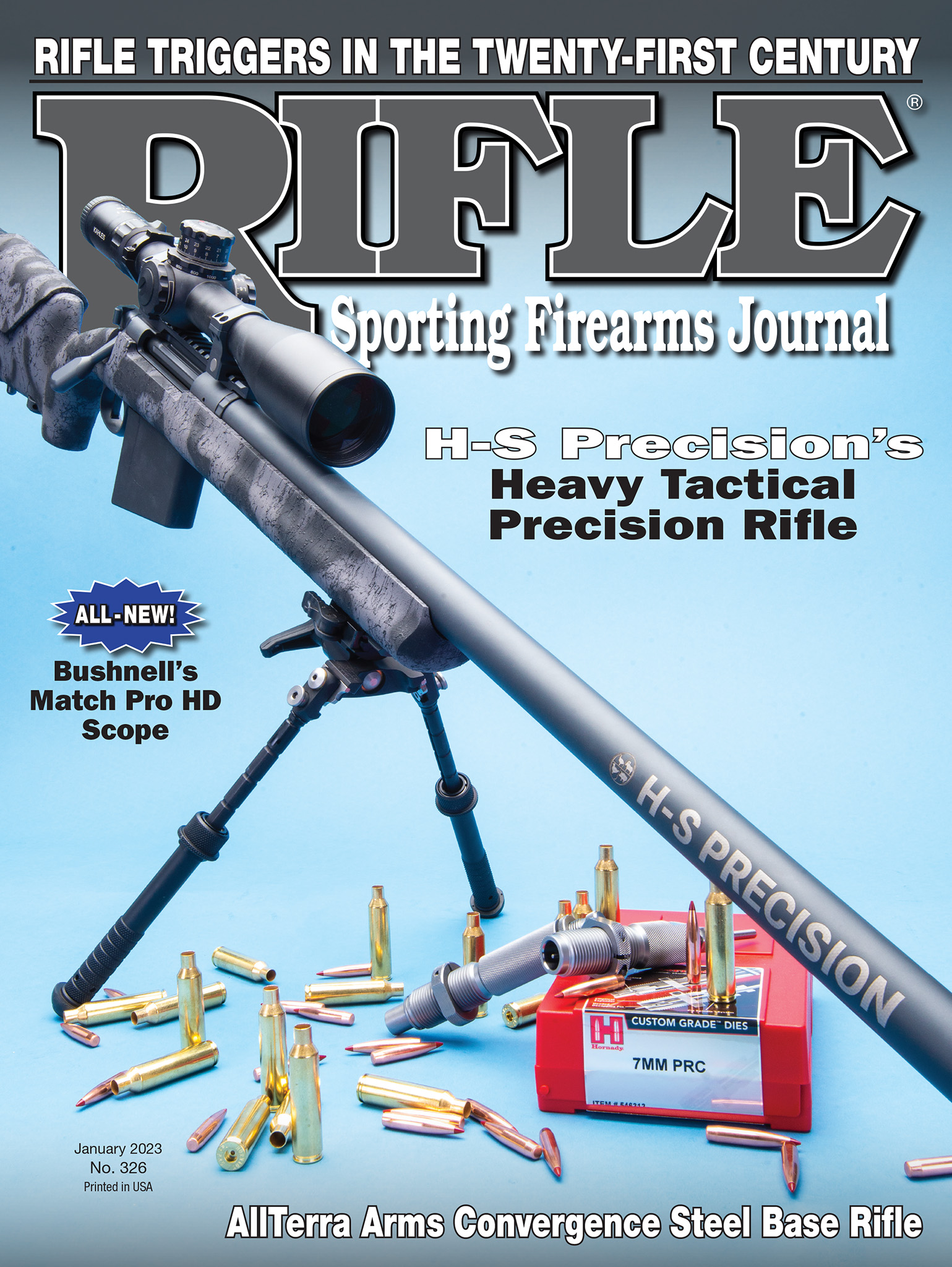Lock, Stock & Barrel
Thoughts on Rifles for Coues’ Deer
column By: Lee J. Hoots | January, 23

A mature buck stands about 30 inches tall and weighs roughly 100 pounds on the hoof, so traditional, heavy bullets are not necessarily needed. Today, there are many other cartridges that excel when pursuing the smallest deer in the southwest deserts, mostly due to new bullets with enhanced ballistic coefficients (BC) that have flattened trajectories.
Before getting on to guns, however, it should be noted that the Coues’ deer was not likely first identified by Doctor Elliot Coues. A specimen of this deer was first procured in 1855 by scientist, Dr. C.B.R. Kennerly, who named it as a new species. In 1874, U.S. Army Surgeon, Dr. Joseph Rothrock, accurately stated “that these deer were not a new species, but merely a smaller version of the common eastern whitetail” (Heffelfinger, 2006). It was Rothrock’s suggestion that the deer be named after Doctor Coues. This information comes from an excellent reference book, Deer of the Southwest, by Jim Heffelfinger (2006), a regional game specialist with the Arizona Game and Fish Department.
Having hunted Coues’ deer over the years on private ranches in Mexico, and after using several cartridges from the .30-06 Springfield on down, it tuns out, no hunter needs a “megablaster” and can get by with rifles that don’t rattle his or her teeth every time the trigger is pulled. However, such a rifle needs to provide a flat trajectory. Instead, a smart hunter would do well with a lightweight bolt-action or single-shot rifle. This includes a nearly unending number of options from which to choose. A hunter new to Coues’ deer might just stick with what he has and bag the buck of his dreams, but there are other options that provide flat trajectories that stand out, and these options don’t need to be heavy on the shoulder or checkbook.
In my opinion, the old 6mm Remington and .243 Winchester would be a good starting place. This is based on experience using both cartridges on mule deer bucks in several states with no problem whatsoever. There are other candidates that are probably more suited to hunting Coues’ bucks, starting with the .240 Weatherby Magnum. In fact, this cartridge is among my favorite cartridges when hunting deer of any kind, not to ignore pronghorns, which weigh about the same as Coues’ bucks. This little cartridge shoots flatly enough to take any Coues’ buck out to 300 or 400 yards. A handloader could load a 100-grain bullet to roughly 3,100 feet per second (fps), therefore providing enough energy to bring down any buck.
Another great cartridge is the .257 Weatherby Magnum. In fact, this is a preferred cartridge when stalking these small deer and pronghorns. Bullets ranging from 100 to 117 grains are excellent. A Hornady 117-grain SST bullet loaded over 72 grains of Ramshot Magnum in my rifle shoots well at just under 3,300 fps.
Though it’s often ignored, the .25-06 Remington is also a great Coues’ option, especially when chambered in a lightweight rifle. The one on hand, however, is a “parts gun” put together on a Remington Model 700 and weighs 8 pounds. Nonetheless, when shooting Speer 120-grain Hot-Cor bullets with 52 grains of Alliant Reloder 19, velocity hovers around 2,905 fps and that’s a great, mild load for any desert buck. The 6.5mm-284 Norma and the .260 Remington provide similar ballistics and should not be overlooked.
Having used all of these cartridges on pronghorns and mule deer, no hunter should consider himself “undergunned” with any of the rifles listed here, but there are far more options, including the .270 Winchester, which just might be the most popular cartridge among serious Coues’ deer hunters. Another includes the Remington 7mm Magnum. However, with good stalking, there is no reason to haul a heavy rifle around.
It should be pointed out that regardless of which cartridge or gun a hunter selects, stalking a Coues’ deer is a challenging adventure. Along with having a flat-shooting rifle, a hunter should be equipped with the best binocular and spotting scope he or she can afford, because Coues’ deer are wily, adept at hiding in plain sight, and can outsmart the best of us. It takes real skill for a hunter to stalk a Coues’ deer within close range, and doing so provides a true hunting experience.


